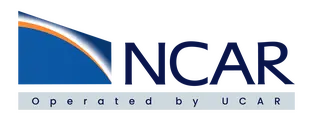Exposures to and origins of carbonaceous PM2.5 in a cookstove intervention in Northern Ghana
To Access Resource:
Questions? Email Resource Support Contact:
-
opensky@ucar.edu
UCAR/NCAR - Library
| Resource Type | publication |
|---|---|
| Temporal Range Begin | N/A |
| Temporal Range End | N/A |
| Temporal Resolution | N/A |
| Bounding Box North Lat | N/A |
| Bounding Box South Lat | N/A |
| Bounding Box West Long | N/A |
| Bounding Box East Long | N/A |
| Spatial Representation | N/A |
| Spatial Resolution | N/A |
| Related Links | N/A |
| Additional Information | N/A |
| Resource Format |
PDF |
| Standardized Resource Format |
PDF |
| Asset Size | N/A |
| Legal Constraints |
Copyright 2017 Elsevier. |
| Access Constraints |
None |
| Software Implementation Language | N/A |
| Resource Support Name | N/A |
|---|---|
| Resource Support Email | opensky@ucar.edu |
| Resource Support Organization | UCAR/NCAR - Library |
| Distributor | N/A |
| Metadata Contact Name | N/A |
| Metadata Contact Email | opensky@ucar.edu |
| Metadata Contact Organization | UCAR/NCAR - Library |
| Author |
Piedrahita, Ricardo Kanyomse, E. Coffey, Evan Xie, M. |
|---|---|
| Publisher |
UCAR/NCAR - Library |
| Publication Date | 2017-01-01T00:00:00 |
| Digital Object Identifier (DOI) | Not Assigned |
| Alternate Identifier | N/A |
| Resource Version | N/A |
| Topic Category |
geoscientificInformation |
| Progress | N/A |
| Metadata Date | 2025-07-11T19:52:36.703557 |
| Metadata Record Identifier | edu.ucar.opensky::articles:19430 |
| Metadata Language | eng; USA |
| Suggested Citation | Piedrahita, Ricardo, Kanyomse, E., Coffey, Evan, Xie, M., Hagar, Y., Alirigia, R., Agyei, F., Wiedinmyer, Christine, Dickinson, Katherine L., Oduro, A., Hannigan, Michael P.. (2017). Exposures to and origins of carbonaceous PM2.5 in a cookstove intervention in Northern Ghana. UCAR/NCAR - Library. https://n2t.org/ark:/85065/d7zw1np0. Accessed 07 November 2025. |
Harvest Source
- ISO-19139 ISO-19139 Metadata

